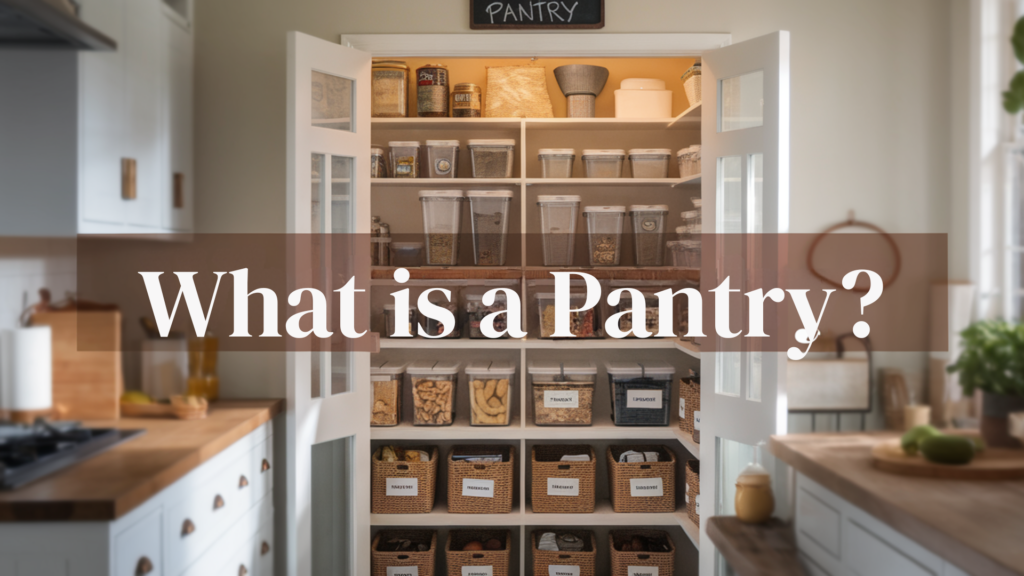Have you ever stood in your kitchen wondering what to make for dinner? Or rushed to the store for one ingredient you thought you had?
A well-stocked pantry can solve these problems. It can help with many other kitchen challenges too. In this article, I’ll show you what a pantry is. I’ll explain why it’s a game-changer for your home. You’ll learn how to save time.
You’ll find out ways to save money. You’ll find out how to reduce stress with this simple kitchen addition.
I’ve helped hundreds of families organize their kitchens. A proper pantry is always my number one tip. You don’t need a huge space.
Regardless of if you have a dedicated room or just a few shelves, the basic ideas work the same.
Trust me on this one. Once you feel the ease of a well-organized pantry, you’ll wonder how you lived without one. It really does make that big of a difference in daily life.
What Is a Pantry?
A pantry is a space for storing food and kitchen supplies. It holds your cooking essentials too. This can be a separate room.
It might be a large cabinet. It could even be just a set of shelves. The key thing is having a special area. This is where you keep dry foods and kitchen basics organized.
Long ago, pantries were cool storage rooms. Families kept preserved foods there before refrigerators existed. Today’s pantries serve a similar purpose.
But now they hold a wider variety of items. They’re central to kitchen organization. A modern pantry holds canned goods, spices, small appliances, and baking supplies.
Your pantry doesn’t need to be fancy. It doesn’t have to be large. Even a tiny apartment can have a pantry area.
What truly matters is how you use the space. The size isn’t as important as the organization.
Importance of A Pantry
Before we look at specific benefits, let’s be clear about something. A pantry isn’t just for people with big homes.
Everyone can use pantry ideas. These work even in the smallest kitchen. A well-organized pantry changes how you cook. It improves how you shop. It even affects how you eat.
1. Organization and Storage
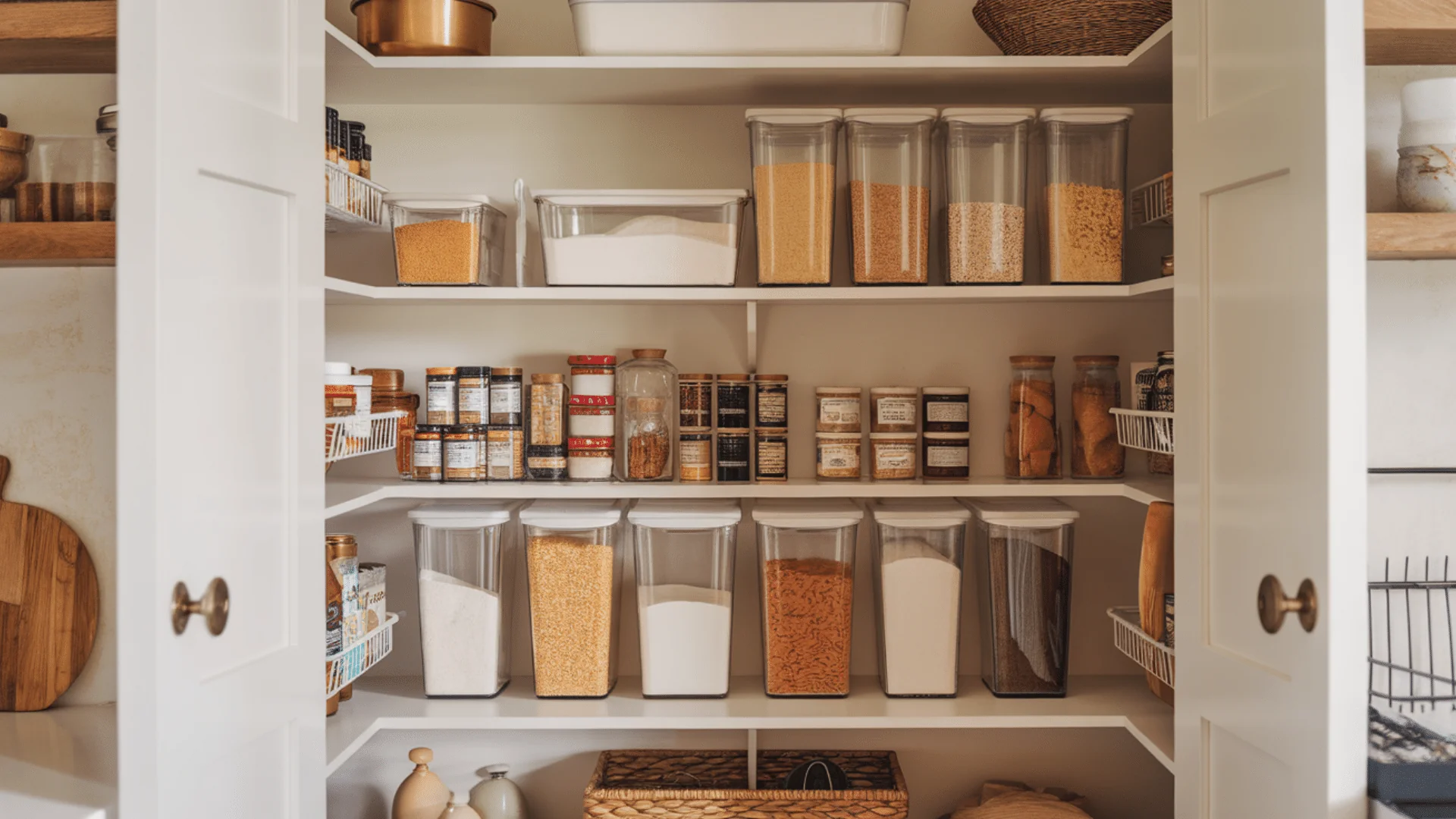
A pantry gives everything a proper home. Say goodbye to messy cabinets. No more losing items or forgetting what you have.
Having special spots for different food types makes cooking easier. You’ll always know where your pasta is. You’ll find your spices right away. You’ll grab baking supplies without searching.
This organization works for non-food items too. Kitchen tools, appliances, and cleaning supplies all fit in a good system.
Good containers keep your ingredients fresh longer. Airtight jars keep bugs out. They preserve the quality of flour, sugar, and other dry goods.
There’s another nice benefit too. Seeing everything neatly lined up brings a sense of calm to your kitchen.
Clear containers show you when supplies are getting low. This visual clue helps a lot when making shopping lists. You won’t forget what you need.
2. Convenience and Accessibility
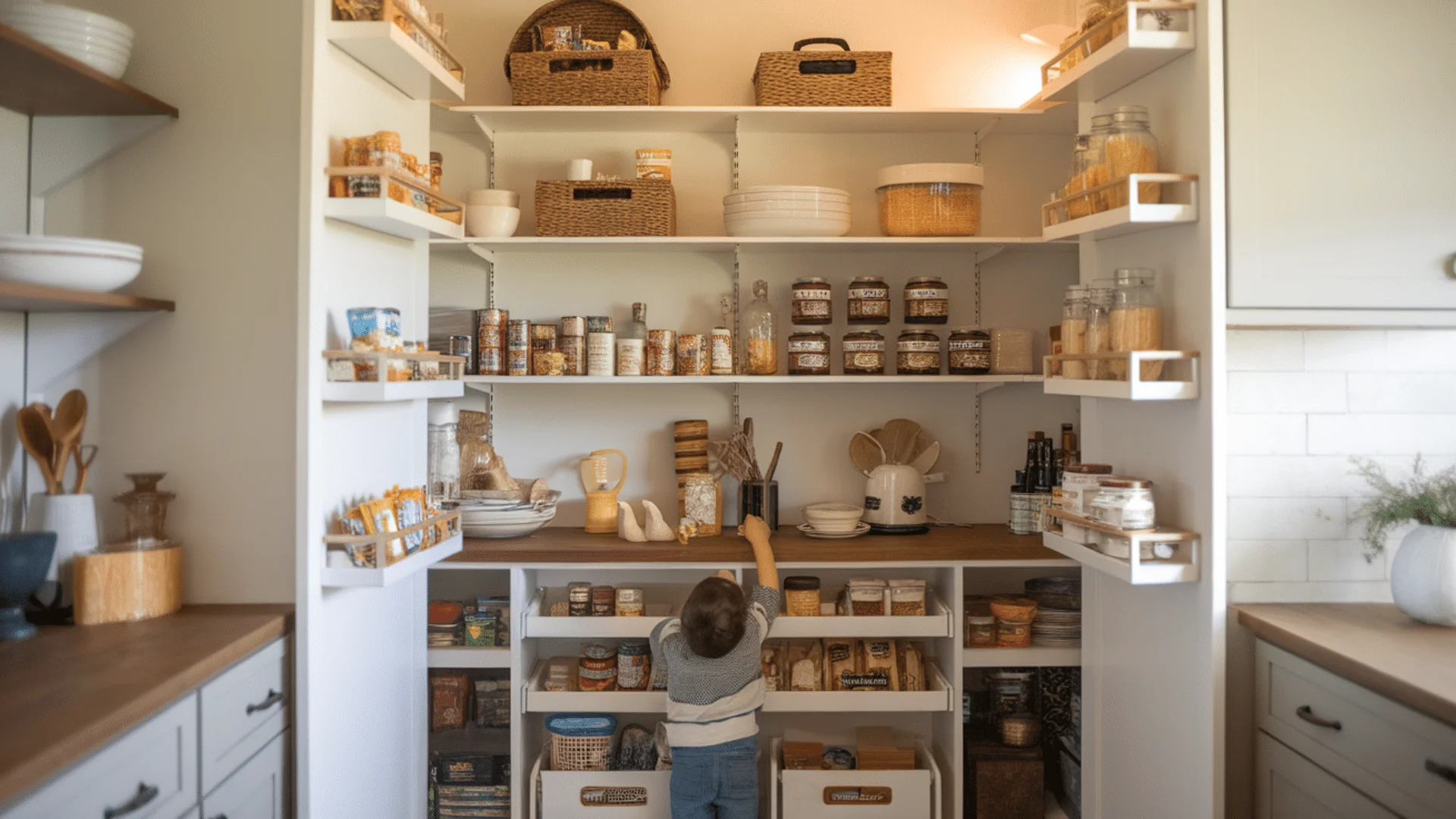
Picture this: you’re making dinner. Every ingredient is right at your fingertips. That’s the convenience a pantry gives you.
With basics always on hand, you won’t need last-minute store trips. This saves precious time. It makes meal prep less stressful too.
Your pantry becomes the first place you shop. Check there before going to the store. You’ll often find you already have what you need. Accessibility matters for families with kids. Children can easily find snacks. Everyone can help themselves.
No one needs to search through many cabinets. A smart pantry puts everyday items at eye level. Less-used items go on higher or lower shelves.
People with mobility issues benefit greatly from pantries. You can arrange items to avoid too much reaching. This careful organization makes cooking easier for everyone. It removes barriers that might make meal prep difficult.
3. Reducing Food Waste
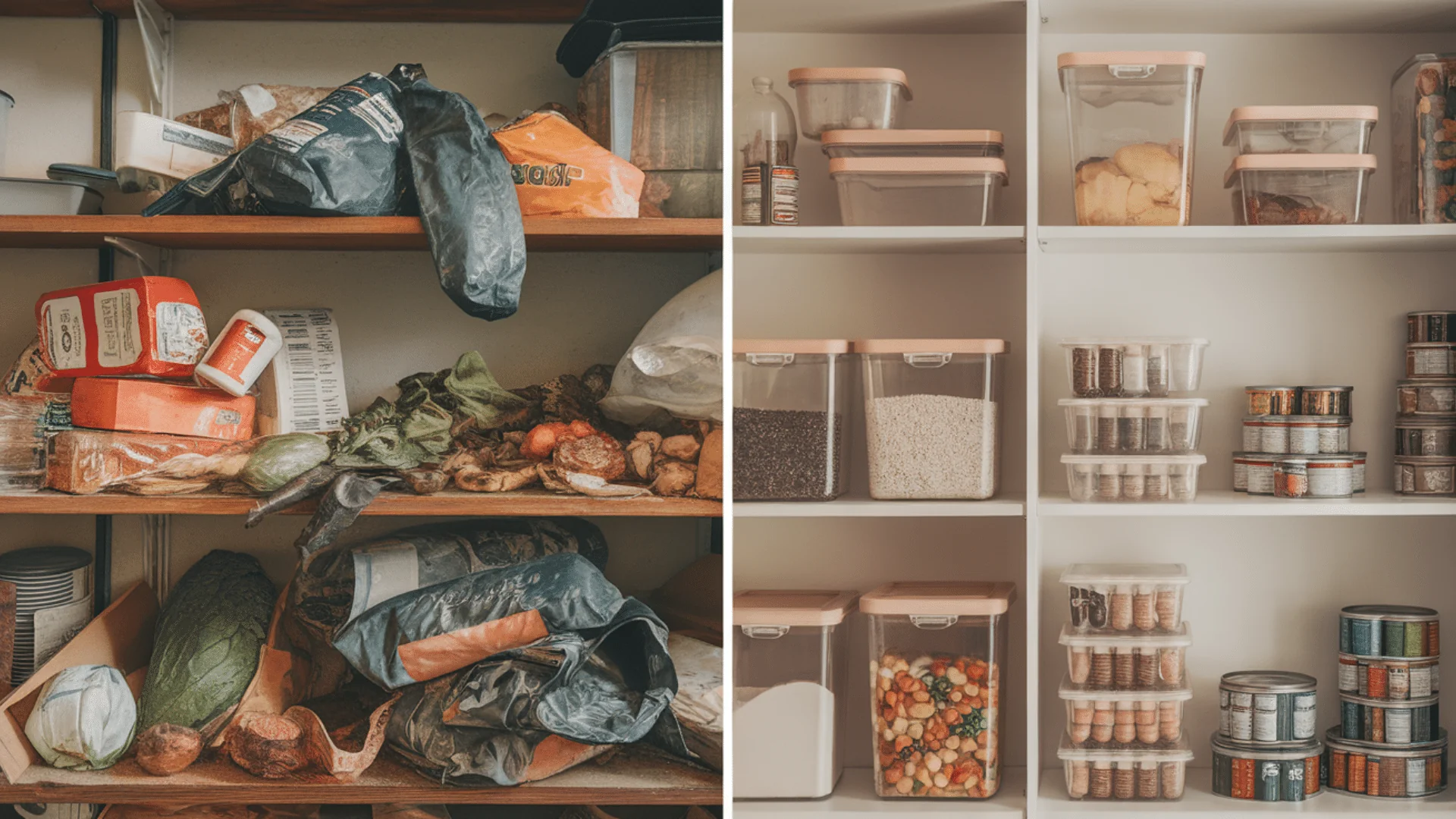
Did you know most American families throw away about 25% of the food they buy? That’s a shocking amount of waste. A pantry helps fight this problem.
When food is visible and stored well, you’re less likely to forget about it. You’ll use things before they expire. You won’t buy duplicates by mistake. Those “I forgot I had this” moments happen less often. Everything has its place. You can see what you have.
Regular pantry checks encourage meal planning. You’ll build meals around what you already have. This “use what’s on hand” approach naturally cuts waste. It also boosts your cooking creativity.
Proper food rotation keeps things fresh. Put newer items behind older ones. Use the oldest products first. This simple habit prevents waste. It saves both food and money over time.
The visibility factor is huge. When you can actually see what you have, you’ll use it more. Items don’t get pushed to the back and forgotten.
4. Cost Savings
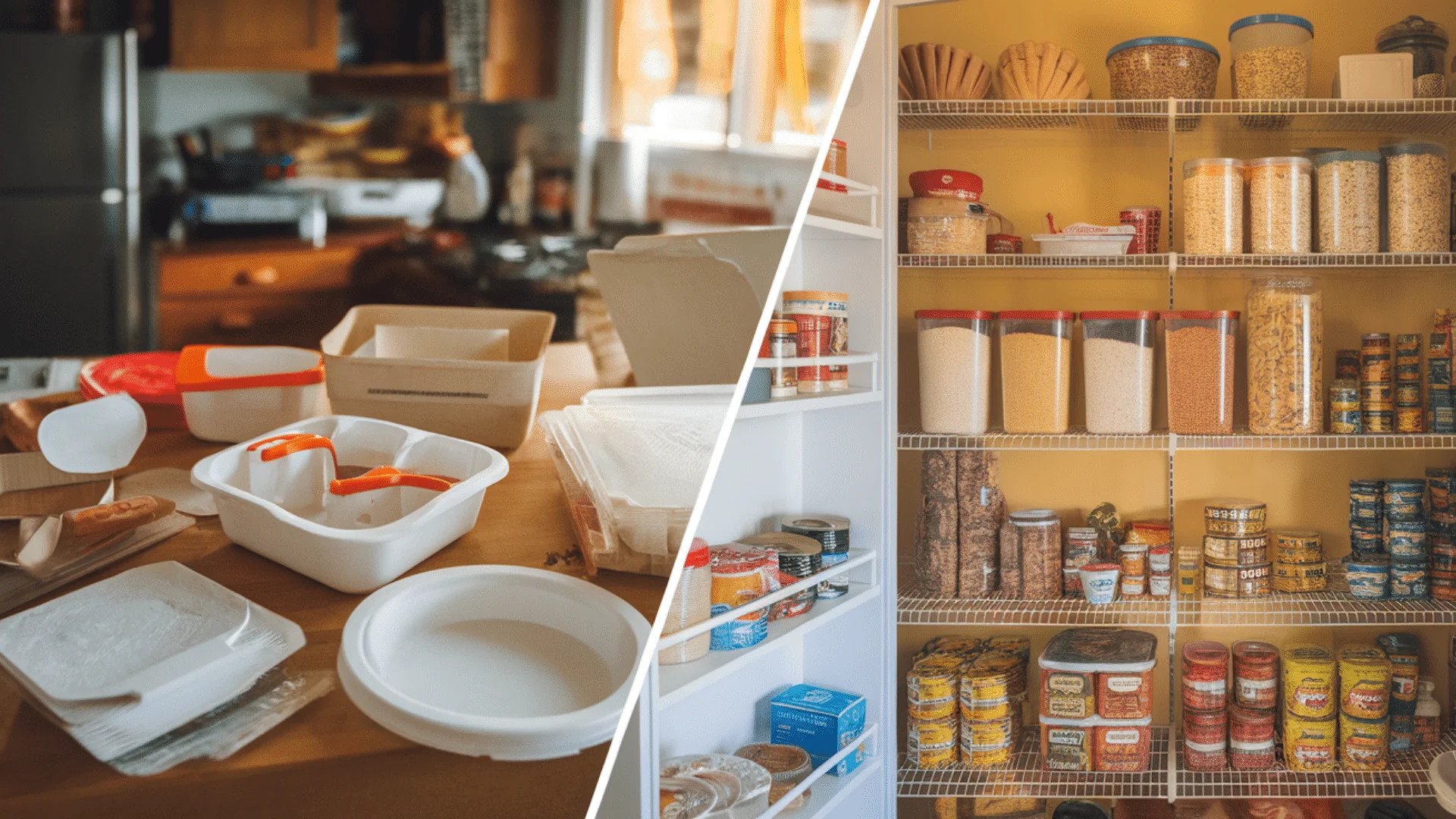
A well-run pantry is like a small investment. It pays you back over time. It lets you buy in bulk when prices drop. Stocking up during sales becomes practical. You’ll have space to store extra items.
Those “buy one, get one” deals actually save money. You can store the extras until needed. These savings add up over months and years.
Having staples ready at home reduces impulse buys. You’ll spend less on expensive convenience foods. When you can quickly make a meal from pantry items, takeout becomes less tempting. Your wallet will thank you.
Another money benefit comes from reduced waste. When food doesn’t spoil unused, that’s money saved. A typical family might save hundreds of dollars each year. Just by wasting less food, your budget stretches further.
Buying in bulk almost always costs less per unit. Your pantry makes this money-saving approach possible. You have space to store larger quantities of items you use often.
5. Emergency Preparedness
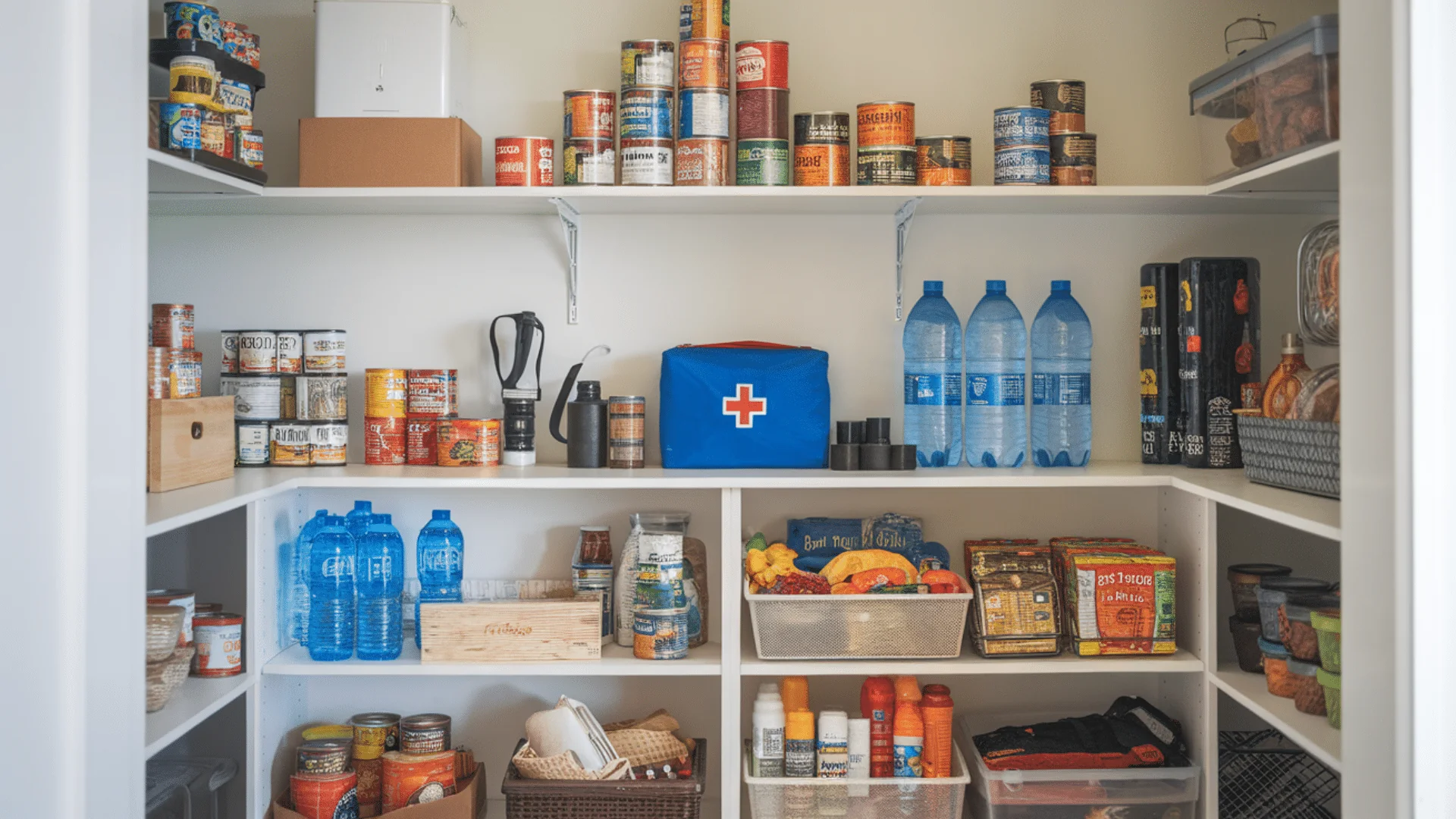
Recent years have taught us an important lesson. Being ready for unexpected events matters. It gives peace of mind. A well-stocked pantry helps during power outages. It’s there for severe weather events. It supports you during other emergencies too.
Having non-perishable foods ensures your family won’t go hungry. This matters when shopping isn’t an option. Even small emergencies become less stressful. Think about sudden illness or bad weather.
You won’t worry about grocery shopping. Your pantry becomes a safety net. It’s there for those times when leaving home is hard.
The pandemic showed many people why having essentials matters. A pantry isn’t about extreme stockpiling. It’s about keeping a comfortable buffer of supplies. Just enough to handle unexpected situations.
Tips for Creating and Maintaining a Pantry
Setting up a pantry doesn’t have to be hard. It doesn’t need to be expensive. Let’s look at some simple tips to get started:
1. Start where you are. Use the space you have right now. Even one cabinet can work as a mini-pantry. Good organization makes any space useful.
2. Group similar items together. Create clear categories. These might include baking supplies, breakfast foods, canned goods, snacks, and pasta products.
3. Invest in clear containers. They don’t have to be fancy or costly. Being able to see what’s inside makes a huge difference in daily use.
4. Label everything. Even see-through containers need labels. Include contents and expiration dates. This prevents confusion.
5. Use vertical space. Door racks add storage. So do stackable shelves. Under-shelf baskets make use of wasted space.
6. Follow the “first in, first out” rule. Place newer items behind older ones. This ensures proper rotation. You’ll use older products before they expire.
7. Take inventory monthly. A quick check prevents surprises. It also helps with meal planning. You’ll know exactly what you have.
8. Clean as you go. Wipe spills right away. Do a deeper clean every few months. This keeps your pantry fresh and appealing.
9. Adjust your system as needed. Your pantry should change as your family does. What works now might need tweaking later. That’s perfectly normal.
10. Think about lighting. A well-lit pantry makes finding items easier. Battery-operated stick-on lights work well. They’re perfect if you don’t have built-in lighting.
11. Make everything accessible. Keep everyday items within easy reach. This matters for everyone in the house, including kids and older adults.
12. Create zones based on how often you use items. Daily essentials should be most accessible. Holiday-only ingredients can go on higher shelves or in back corners.
Remember that creating a good pantry takes time. Start with small improvements. Build your system gradually. The benefits will appear quickly, even with modest changes.
Conclusion
A pantry is more than just a storage space. It’s a powerful tool for better living. The organization helps daily life run smoothly.
The convenience saves precious time. Waste reduction helps our planet. Cost savings benefit your budget. Emergency preparedness brings peace of mind.
These benefits work in any home. It doesn’t matter if you have a walk-in pantry or a single cabinet. The principles work anywhere. Start small if needed. Just make sure you start somewhere. The positive changes will quickly become clear.
I’d love to hear about your pantry successes! What organization methods have worked in your home? Do you have creative storage solutions to share? Your experiences might help another reader. Your tips could solve someone else’s kitchen challenges.
Always remember that function matters most. Even the prettiest pantry must work well for your family.
Create a system that fits your unique needs. It should match your cooking style and family size. When you do, you’ll enjoy the benefits for years to come.
What’s your biggest pantry challenge? What questions do you have about getting organized? Share in the comments below! I read every comment and love hearing your thoughts.

